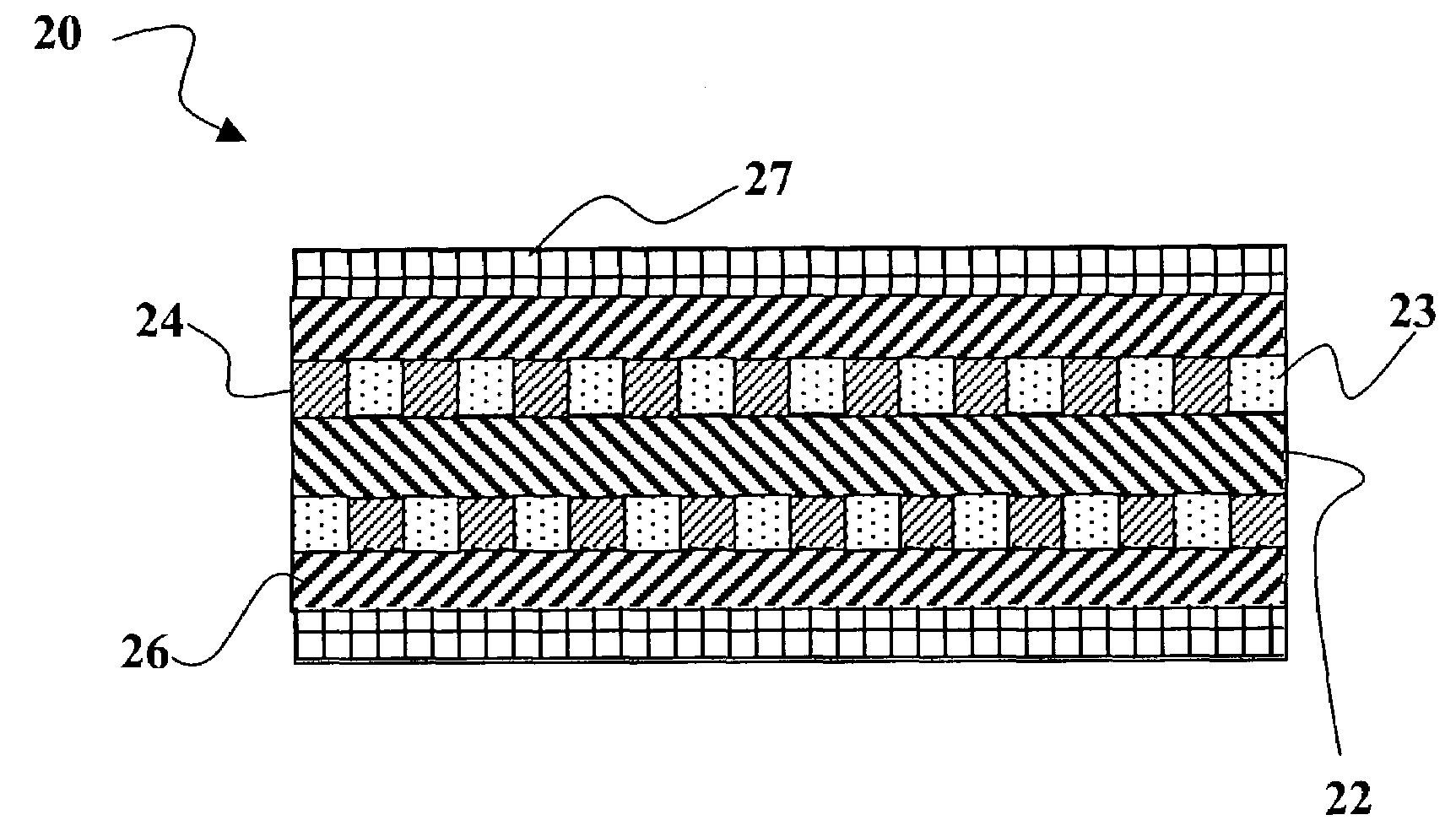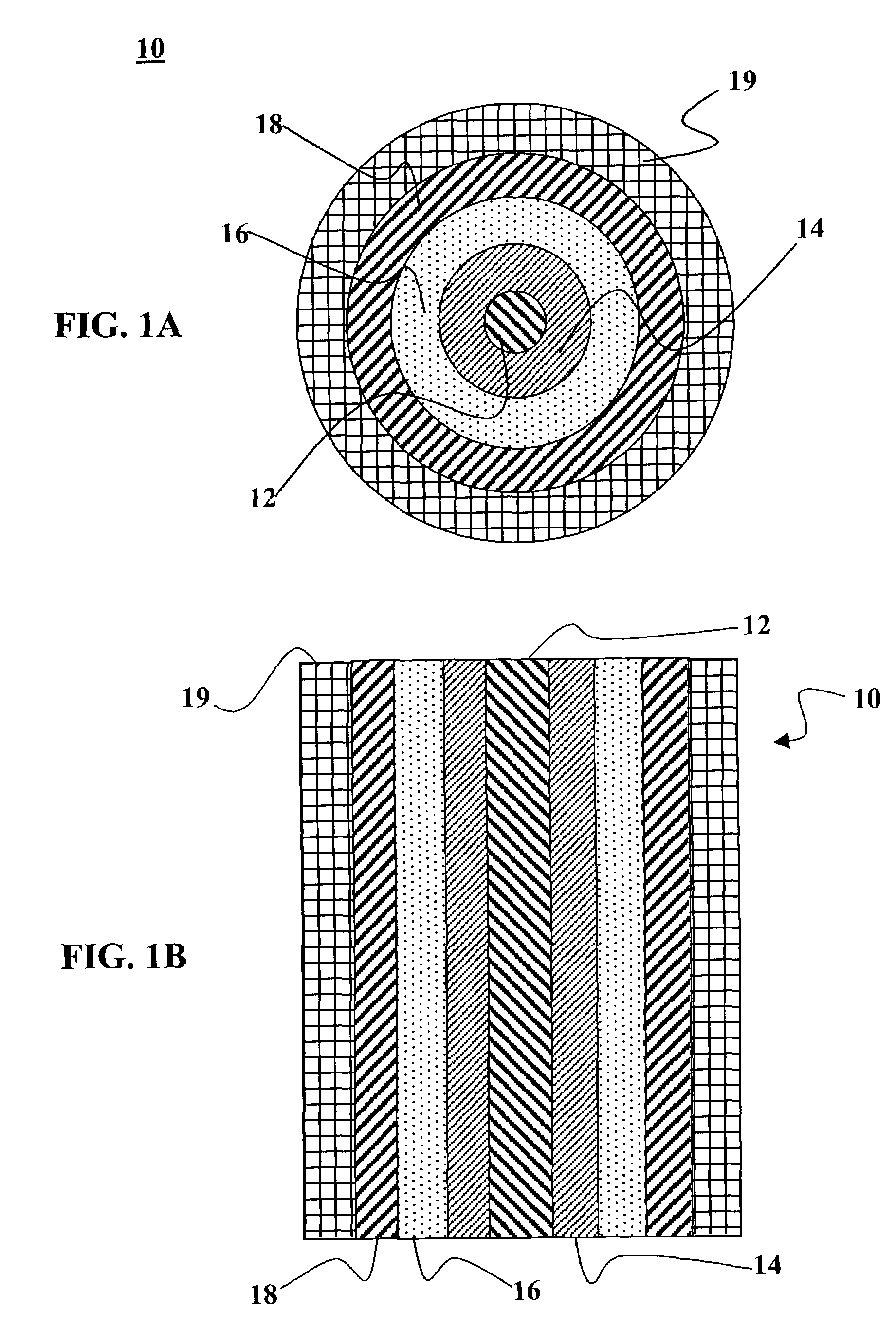Optoelectronic fiber
a technology of optoelectronic fiber and fiber, which is applied in the direction of filament/thread forming, thermoelectric devices, and control devices. it can solve the problems of unattractive unfavorable large-scale energy production of solar cells, and inability to meet the needs of large-scale production, etc., and achieves the effect of relatively inexpensive and large-scale production
- Summary
- Abstract
- Description
- Claims
- Application Information
AI Technical Summary
Benefits of technology
Problems solved by technology
Method used
Image
Examples
Embodiment Construction
Contents
I. Glossary
II. General Overview
III. Optoelectronic Fiber Architecture
IV. Fabrication of Optoelectronic Fibers
V. Alternative Embodiments
VI. Conclusion
I. GLOSSARY
[0017]The following terms are intended to have the following general meanings as they are used herein:
Electrospinning: In general, electrospinning refers to a process for forming threads or fibers from a spinning solution by passing the solution into an electric field in a thin stream or in drops on order to separate the stream or drops into threads.
Device: An assembly or sub-assembly having two or more layers of material.
[0018]Semiconductor: As used herein, semiconductor generally refers to a material characterized by an electrical conductivity that depends strongly on material properties and other factors. Material properties may include crystalline orientation and the presence of dopants. Other factors may include temperature, applied electric field, incident radiation, and the like.
N-type semiconductor, P-type sem...
PUM
| Property | Measurement | Unit |
|---|---|---|
| diameter | aaaaa | aaaaa |
| diameter | aaaaa | aaaaa |
| diameter | aaaaa | aaaaa |
Abstract
Description
Claims
Application Information
 Login to View More
Login to View More - R&D
- Intellectual Property
- Life Sciences
- Materials
- Tech Scout
- Unparalleled Data Quality
- Higher Quality Content
- 60% Fewer Hallucinations
Browse by: Latest US Patents, China's latest patents, Technical Efficacy Thesaurus, Application Domain, Technology Topic, Popular Technical Reports.
© 2025 PatSnap. All rights reserved.Legal|Privacy policy|Modern Slavery Act Transparency Statement|Sitemap|About US| Contact US: help@patsnap.com



